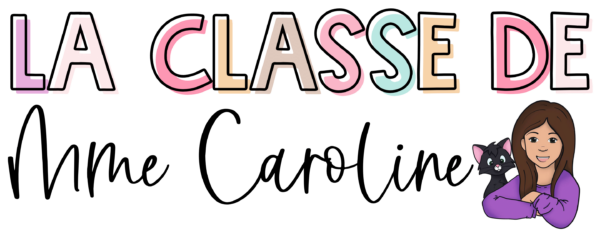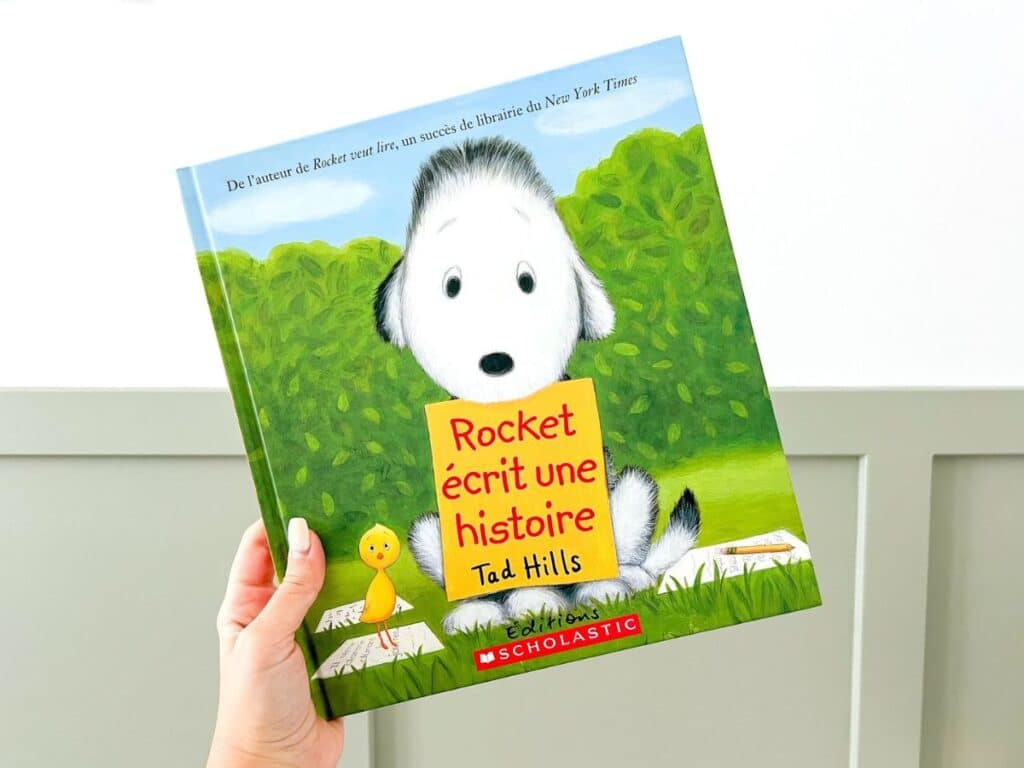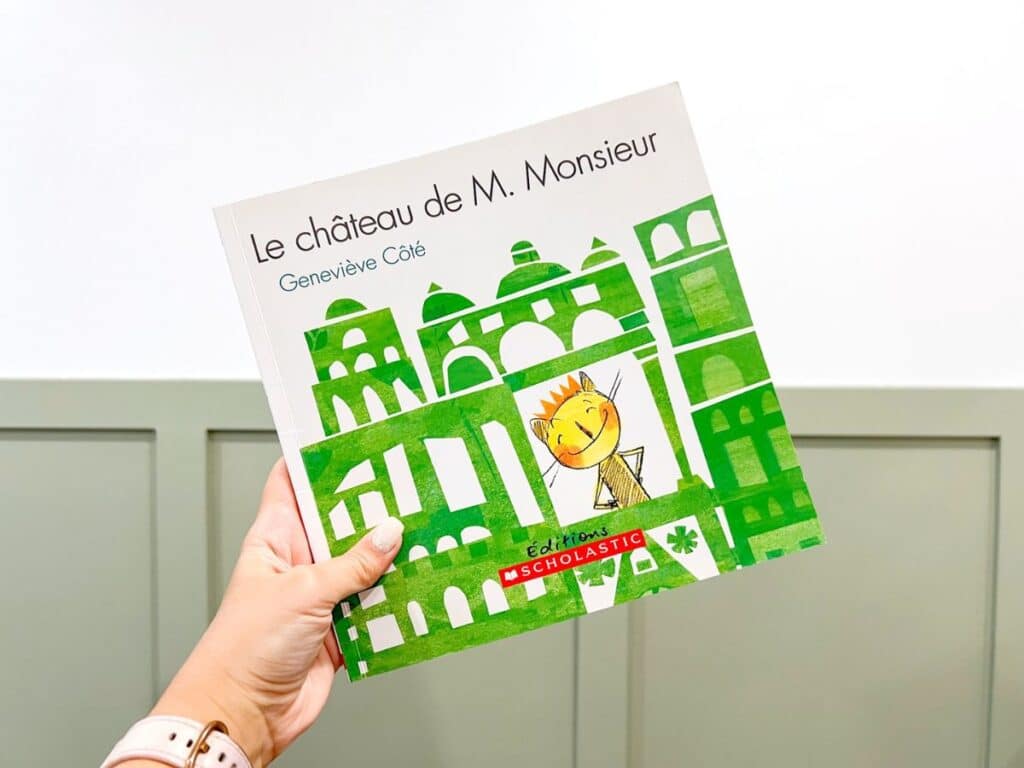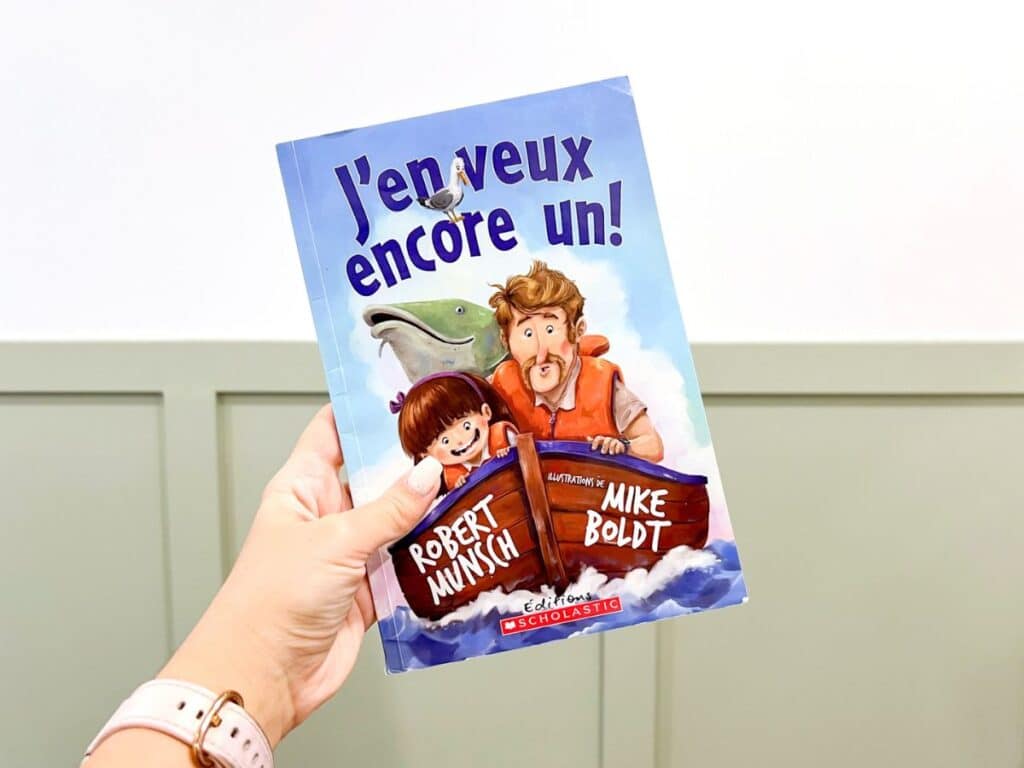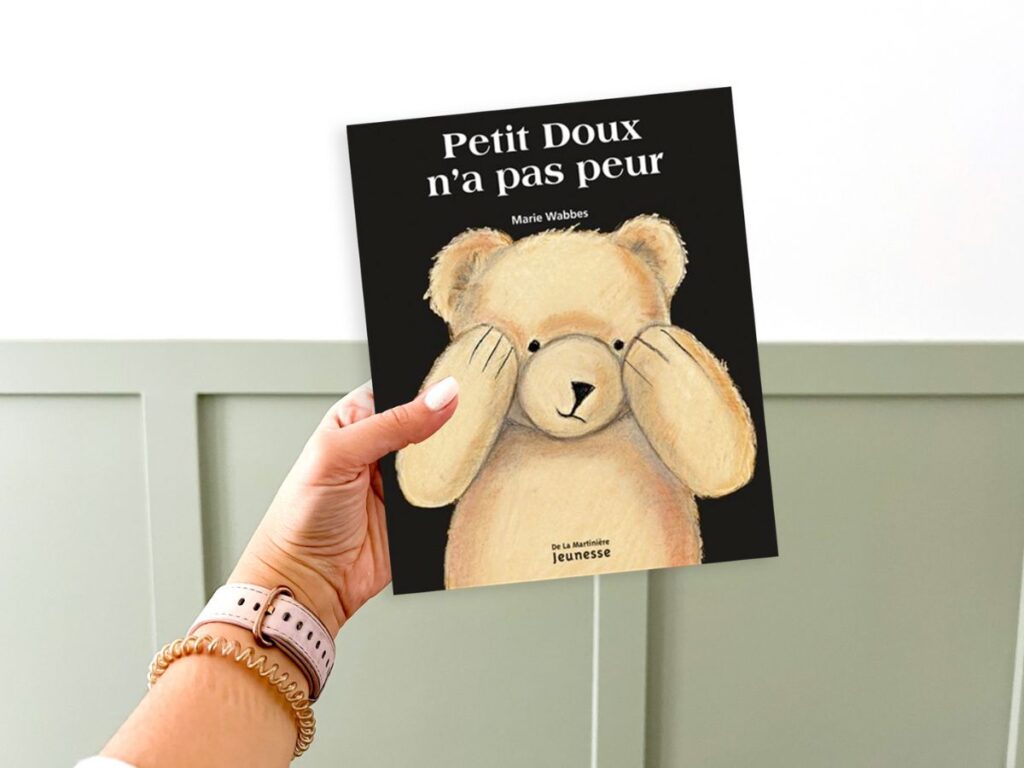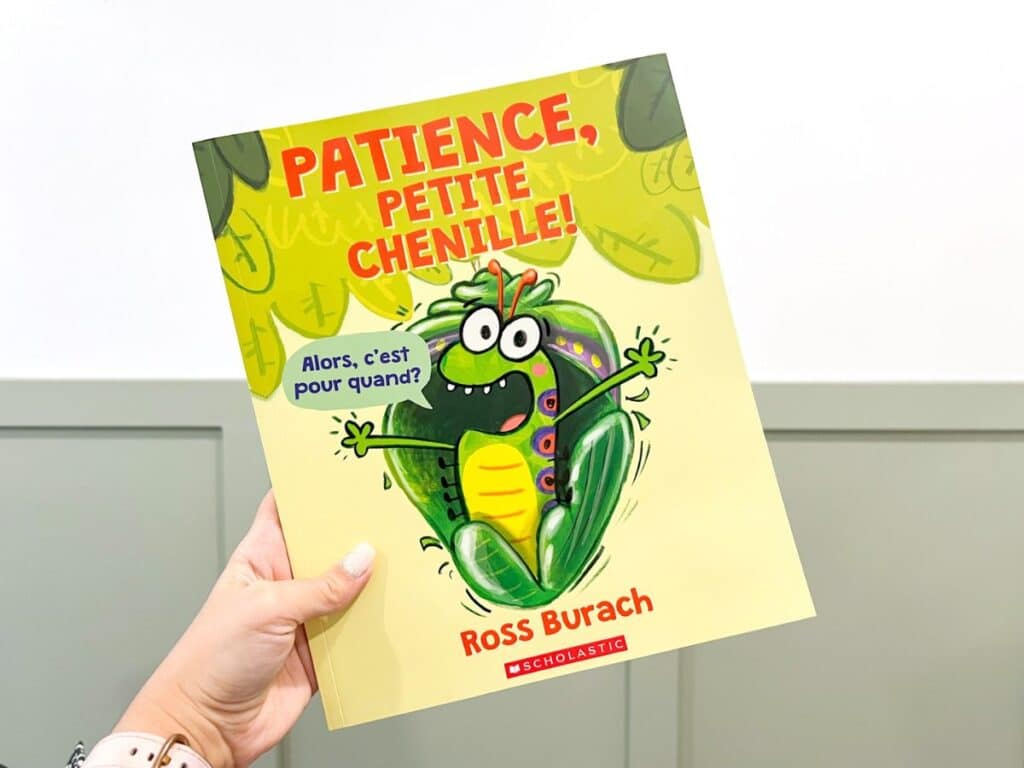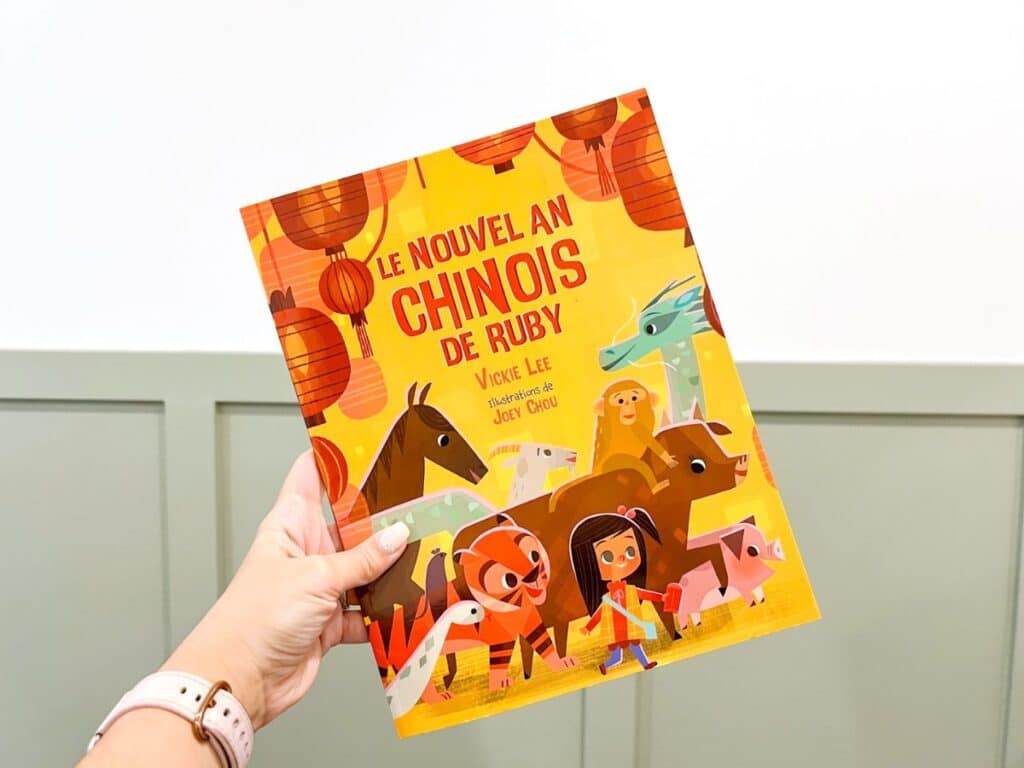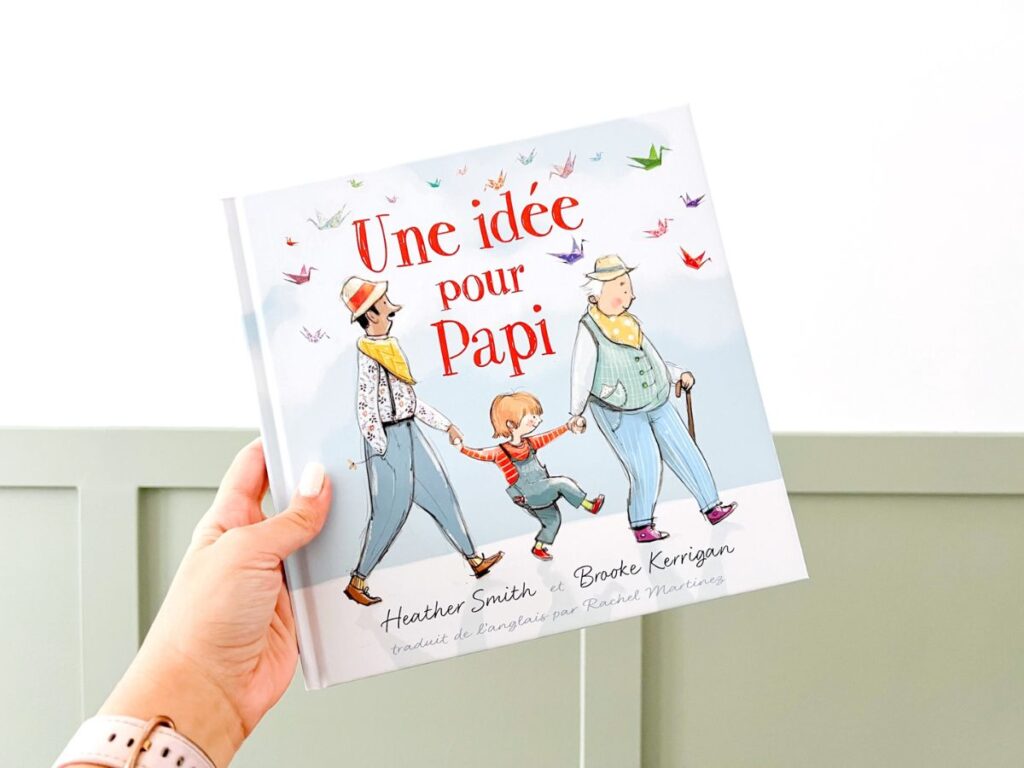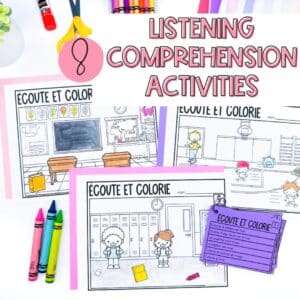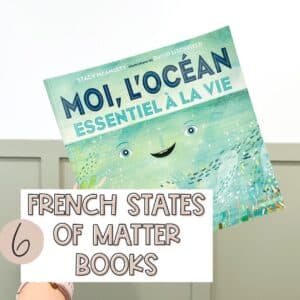
8 Essential Ways to Use French Read Alouds in the Classroom
French read aloud books should be an integral part of your lesson planning. It’s where the teacher reads a book or text aloud to the students. Doing so helps expand their vocabulary, improve comprehension, and build listening skills. There’s just something special about the shared reading experience.
Most teachers include read alouds in their literacy block. However, read alouds are a brilliant teaching strategy in all school subjects. If you’re wondering “how to use French books in the classroom,” this might be one ingenious solution.
Let’s explore some clever ways to use French read-alouds in your classroom:
1. French Mentor Texts for Writing
Teaching writing skills can be more effective and engaging when you incorporate French books for students into your lessons. These books aren’t special textbooks but ordinary ones that do something really well. For instance, imagine using a book without words to teach kids the importance of adding details to their pictures. This approach makes learning more visual and practical.
You can also bring in real-life texts, like informational books to talk about non-fiction writing, or even a recipe to show how to write instructions. Here’s a quick list of writing topics you can cover using French mentor texts:
- Narrative writing
- Procedural writing (how-to writing)
- Descriptive writing
- Non-fiction writing
- Fairy tales
- Persuasive writing
- Poetry
Using French mentor texts to support your writing lessons is a great way for students to really see and understand what you want them to do. Telling them things like “make your pictures more detailed” doesn’t necessarily help to get your students to actually do it, or understand what it should really look like.
French read alouds help with teaching the skills and habits you want them to have. Once you start using mentor texts in your French writing lessons, you’ll never go back. They make a huge difference.
2. Modelling Reading Strategies
Books aren’t just about the information inside; they are also a tool to hone a student’s reading skills. Here’s how you can use them in your classroom to enhance different aspects of reading:
- Phonological Awareness: Use books to practice various phonological awareness skills in French, such as: identifying syllables, rhymes, and sounds at the beginning or end of words. This foundational skill is key to reading readiness.
- Decoding: Use any book to model decoding strategies on selected words, making the abstract concept of decoding concrete and understandable. Alternatively, decodable books to demonstrate breaking down words into syllables or phonemes for easier reading to help model reading behaviour.
- Comprehension: Reading isn’t just about decoding. It’s equally about understanding. In a second language context, comprehension is critical, but harder to master. Use read-aloud sessions to retell stories, draw connections, and make predictions, thereby bolstering students’ comprehension abilities in a more nuanced language environment.
3. Building Listening Skills
Talking and writing are only two parts of communication; listening is another. If you’re wondering how to use French books in the classroom, performing a read-aloud can build vocabulary, work on oral compression skills, and much more.
Reading books based on a vocabulary theme you’re exploring or simply choosing books for fun encourages a lively and engaging way to introduce new words and concepts. Remember, not every book needs to serve a specific educational purpose beyond sparking small discussions. It’s OK to read a book for fun!
Sprinkle in these reading moments if you’ve got a bit of time to spare, for example, if your students finish their work early or if you need to change direction during a lesson that isn’t going as planned.
For fun books are a great way to read books with your students that don’t necessarily fit into subject areas, like the end of the school year! Read a book to your class and talk about it – did you like this book? Why/why not? This is also great for getting some extra speaking practice in!
4. Health Lessons
Some French books for students aren’t just about mastering vocabulary – they might also cover health. Including French read alouds in your health class helps cover various topics, from consent and personal safety to mental health and healthy eating.
For instance, you could read about practical safety tips for situations like a fire or best practices for Halloween trick-or-treating.
Using French read-alouds is highly effective when talking about difficult topics like mental health or the specifics of consent. Through carefully selected texts, you can present these subjects in a context that is more accessible and relatable.
5. Science Lessons
Using books in science classes is a smart idea. You can mix non-fiction books, which give real facts and information for projects, with fiction books that make learning fun. For example, a book like “Patience petite chenille” can help teach about how butterflies grow, and it’s enjoyable to read. The “Ma vie de…” series is another example where fiction entertains while educating.
Meanwhile, non-fiction books teach real information about the subject matter. Include them as part of research projects to find real-life examples of what you’re learning about. Even fiction books will have truthful information included, but provided in an entertaining way, like these books that are perfect for your Growth and Changes in Animals science unit.
6. Social Studies Lessons
Social studies is a subject that you can fit tons of read alouds into. Books about local community helpers or roles and responsibilities are ideal for Grade 1. This includes stories on community helpers, rules in different settings, and how roles change with new family members or as children get older.
In Grade 2, the focus shifts to families, celebrations, and global communities. Here, any book that talks about different holidays, family traditions, or life in various parts of the world can be enlightening, helping students understand that life can be very different from their own experiences.
Moving on to Grade 3, the curriculum covers living and working in Ontario and historical communities in Canada from 1780 to 1850. Non-fiction texts that describe various jobs in Ontario, the climate in different cities, and the province’s diversity are helpful. Additionally, books about pioneers, First Nations communities, and their interactions provide a deep dive into Canada’s history and diversity.
7. French Read Alouds for Character Building
Using French books in class is a great way to help with character-building. You can pick stories showing students how to handle tough situations, like resolving conflicts or ensuring everyone feels included. These books can also open up discussions about mental health, such as dealing with depression.
Whether it’s a problem a few students are facing or something the whole class is going through, books can be a helpful tool to find solutions and learn new ways to cope.
8. Use French Books to Introduce Important Events & Topics
We’ve talked about different ways you can use French books in your classroom or for academic purposes. However, there are tons of other topics that read alouds can help with. For example, exploring why the Terry Fox Run is held annually, acknowledging Pride Month, addressing anti-racism, observing the Day of Truth and Reconciliation, and commemorating Remembrance Day are all essential conversations.
These books are very important to read with your students – they’re a conversation starter, a chance for students to ask questions about these subjects in a safe environment.
Check out the linked blog posts found throughout this blog, and you’ll find specific follow-up activity ideas you can do in your classroom with the books I recommend.
You might also like...
find what you need
Browse by Category
Looking to do some phonics based shared reading?

